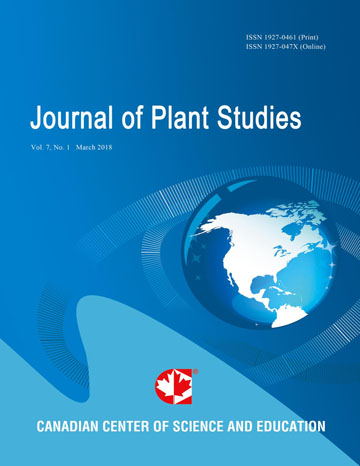Evolution of Chloroplast 16S Ribosome RNA Dependent Spectinomycin Resistance and Implications for Chloroplast Transformation
- Shi-Hua Wang
- Shu-Min Zhang
- Hong-Yun Liu
- Ning Sun
- Shuang-Cheng Gao
- Xiao-Qin Wang
- Zheng Liu
Abstract
Spectinomycin is an aminoglycoside antibiotic that inhibits prokaryotic-like protein synthesis by blocking translocation of messenger RNA and transfer RNAs on the ribosome. Mutants resistant to this antibiotic have been isolated from a wide range of bacteria, the alga Chlamydomonas and from chloroplasts of different species of higher plants. Usually a single nucleotide substitution occurred on chloroplast 16S ribosome RNA gene is sufficient to resist spectinomycin. Mutation rates of 16S rRNA gene of Nicotiana tabacum L treated with different concentrations of spectinomycin were studied. The results showed a sharp decrease of green resistant shoots from 30 to 300 mg l-1 spectinomycin, then an increase from 300 to 500 mg l-1 and finally a gradual decrease from 500 to 1000 mg l-1. The increasing number of green resistant shoots from 300 to 500 mg l-1 spectinomycin indicates that the higher selective pressure applied by the antibiotic promoted a faster evolutionary rate of 16S rRNA gene. Furthermore, a new substitution site of 16S rDNA which conferred resistance to spectinomycin was isolated and confirmed by sequencing, endorsing that mutation is due to selection through high concentration of the antibiotic.
- Full Text:
 PDF
PDF
- DOI:10.5539/jps.v3n2p50
Index
- AGRICOLA
- CAB Abstracts
- CABI
- CAS (American Chemical Society)
- CNKI Scholar
- Elektronische Zeitschriftenbibliothek (EZB)
- Excellence in Research for Australia (ERA)
- Google Scholar
- JournalTOCs
- Mendeley
- Open policy finder
- Scilit
- Standard Periodical Directory
- Technische Informationsbibliothek (TIB)
- WorldCat
Contact
- Joan LeeEditorial Assistant
- jps@ccsenet.org
